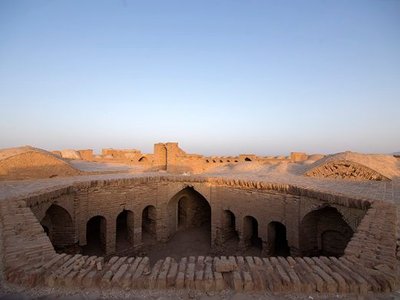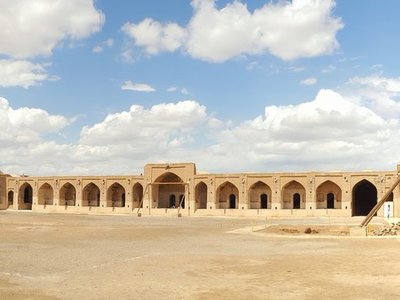Deir-e Gachin Caravanserai


The Iranian desert is peppered
with long-abandoned caravansaries, sprawling inns centered around large rectangular courtyards where caravans of merchants would rest, trade, and stay the night before continuing their long journey along the Silk Road.
Located along the ancient trade route between Rey and Qom is one of the largest and oldest of the Persian caravansaries, Deir-e Gachin, often called the “mother of all Iranian caravansaries.”
Most reports date Deir-e Gachin back to the Sassanian dynasty, between 334 and 651 CE, when it was possibly built as a fortified fire temple. But much of what is seen today was built centuries later after the structure was restored during the Safavid dynasty in the 16th through 18th centuries when caravansaries flourished along the Silk Road.
Deir-e Gachin is laid out like many Persian caravansaries, forming a huge open courtyard in the shape of a perfect square. Surrounding the courtyard are dozens of guest rooms and camel stables for merchants to post up for the night. The caravanserai is unique, though, in that each corner was built to serve a different purpose: a mill in the northwest, a bathhouse and kitchen in the southwest, a private apartment in the northeast, and a mosque in the southeast.
Today the Deir-e Gachin Caravanserai is situated in the middle of Kavir National Park, on the western edge of
Iran
’s Dasht-e Kavir, or “Great Salt Desert.” Visiting this remote landscape is a rare and memorable experience, as the pristine environment is protected from any human settlement. Spending the night under the desert stars, far from the light and noise of the city, you can imagine what life may have been like for the merchants that traversed the desert centuries ago.